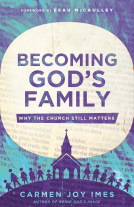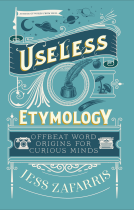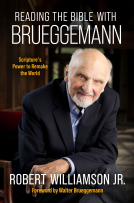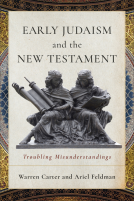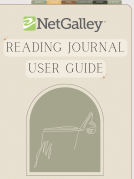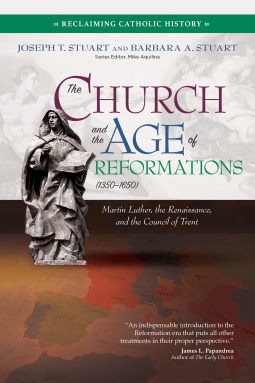
The Church and the Age of Reformations (1350–1650)
Martin Luther, the Renaissance, and the Council of Trent
by Joseph T. Stuart, Barbara A. Stuart
This title was previously available on NetGalley and is now archived.
Send NetGalley books directly to your Kindle or Kindle app
1
To read on a Kindle or Kindle app, please add kindle@netgalley.com as an approved email address to receive files in your Amazon account. Click here for step-by-step instructions.
2
Also find your Kindle email address within your Amazon account, and enter it here.
Pub Date 8 Apr 2022 | Archive Date 8 Dec 2022
Talking about this book? Use #TheChurchandtheAgeofReformations13501650 #NetGalley. More hashtag tips!
Description
In 1517, Augustinian monk Martin Luther wrote the infamous Ninety-Five Theses that eventually led to a split from the Catholic Church. The movement became popularly identified as the Protestant Reformation, but Church reform actually began well before the schism.
In The Church and the Age of Reformations (1350–1650), historian Joseph T. Stuart and theologian Barbara A. Stuart highlight the watershed events of a confusing period in history, providing a broader—and deeper—historical context of the era, including the Council of Trent, the rise of humanism, and the impact of the printing press. The Stuarts also profile important figures of these tumultuous centuries—including Thomas More, Teresa of Ávila, Ignatius of Loyola, and Francis de Sales—and show that the saints demonstrated the virtues of true reform—charity, unity, patience, and tradition.
You will learn:
· Reform efforts in the Catholic Church were underway before Luther’s Ninety-Five Theses.
· The Church did not sell the forgiveness of sins with indulgences.
· Millions of people did not die in the Spanish Inquisition; there were less than 5,000 deaths during a 350-year period. Inquisitions led to legal advances such as grand juries, the need for multiple witnesses, and defendant protections that are still in place today.
· The so-called Catholic Reformation was conducted in four stages and exhibited respect for Church authority, human free will, and the saints, and focused on the new universal reach of the Church around the globe due to missionary work.
A map and chronology are included.
Books in the Reclaiming Catholic History series, edited by Mike Aquilina and written by leading authors and historians, bring Church history to life, debunking the myths one era at a time.
A Note From the Publisher
Barbara A. Stuart is homeschooling mom and social aide. She founded and directed a pregnancy resource center in Bismarck, North Dakota.
Advance Praise
“An indispensable introduction to the Reformation era that puts all other treatments in their proper perspective.”
James L. Papandrea
Author of The Early Church
“It is hard to imagine an event that has shaped the modern world more than the Reformation. Joseph and Barbara Stuart serve as able guides through its complexities by exploring its causes, major figures and events, and aftermath. Their book is fresh and compelling, leading us to revisit the past in order to bring its lessons into the present.”
R. Jared Staudt
Associate superintendent for mission and formation for the Archdiocese of Denver
Visiting associate professor at the Augustine Institute
“This phenomenal yet accessible text will equip Catholics—and anyone of good will from any faith tradition—to more effectively understand what really happened during the controversial period.”
Justin McClain
Catholic author and teacher
Available Editions
| EDITION | Paperback |
| ISBN | 9781646800339 |
| PRICE | US$17.95 (USD) |
Featured Reviews
The latest volume in the “Reclaiming Catholic History” series documents the era from 1350 to 1650, incorporating the years leading up to the Protestant Reformation and its aftermath. The series aims to present an unbiased and objective timeline of “Christian history” - ostensibly a “just the facts” from “God’s point of view” - whilst making the story accessible and entertaining. I am not a Christian, but I applaud any attempt at an overview of history from a more honest and human perspective.
The title of the book is a statement of intent - this was the era of not just THE Reformation, but of many. The authors, Joseph T. Stuart and Barbara A. Stuart, offer a contemporary and modern reassessment of the Reformation that is never boring, writing accessibly and vividly to bring the era and it’s people to life. Towering historical figures such as Thomas More, Johanes Gutenberg (whose printing press would have a profound effect on the accessibility of the Reformation) and of course Martin Luther, a personal hero of mine. Rightly remembered as the instigator of change, this book shows that the genesis of that change had begun much earlier.
The book includes a chronological timeline of the era from 1350 to 1650, a map, bibliography and a full index. Sidebars entitled “Up Close And Personal” give concise biographies of the key players of the time, and the “You Be The Judge” panels invite the reader to make up their own mind about events and institutions such as the Spanish Inquisition; the latter having many of its enduring myths debunked.
This book was a refreshing read. It looks at history from a new perspective whilst remaining eminently scholarly, and deserves to be widely read.
“The Church and the Age of Reformations (1350-1650)” by Joseph T. Stuart and Barbara A. Stuart is the next volume in the Reclaiming Catholic History series, published by Ave Maria Press. You may think of this period of history as the Reformation. If so, the title will draw your attention. This is intentional. In their recent work, the authors contrast the Protestant Reformation with the concurrent work of Catholic reformers and attempt to show that the Protestant reformers failed. Rather than reform the Church, they “took the easier way out of creating separate ecclesial bodies.”
As a non-Catholic Christian, I was excited to read the Stuarts’ new book. I have looked little at this period from the Catholic perspective, doing so gave me a deeper understanding. “The simple argument of this book is that the Church in the Age of Reformations provides a case study of the principles of true reform and in the challenging conditions of the time that obscured them.” The authors consider pertinent history, followed by a survey of important Protestant and Catholic reformers.
Several factors challenged the Catholic Church. Previously illiterate masses had access to the written text through the invention of the printing press. People were ready to investigate matters on their own. Moral failures of the Church only increased this readiness. The authors do a good job presenting these failures, as well as the sins of the Protestant reformers. The non-Catholic reader may challenge the interpretation of certain events, but nothing more than expected in a discussion of this nature. I disagree with their recurring conclusion that the reformers should have followed the tradition of reforming the Church rather than leaving it.
The book leads one to believe that only by remaining with the Catholic Church can Christians achieve unity. As evidence for this, the authors point to the splintering of Protestant churches, all holding onto their personal interpretation of the Bible. So rather than relying on personal understanding, the tradition and teaching of the Church ought to have the final say. But why should Christians acknowledge the authority and tradition of the Catholic Church, which could come through the edict of an immoral man? Matthew 16.19. However, should one argue that the personal interpretation of the Bible can only lead to division, and then tie the solution to a personal interpretation of the Bible?
The authors did a great job explaining things that often puzzle. I appreciated the treatment of indulgences, the inquisition, and even the origins of different groups within Catholicism. Though I disagree with their view of biblical authority and salvation, they helped me understand the Catholic teaching on these subjects. The Catholic Church has a rich history of doing good and lifting the forgotten of society. The lives of individuals like Ignatius of Loyola make me want to do better.
I enjoyed the Stuarts’ latest work. I encourage you to pick up a copy and read it. It will inform your understanding of the period. Its depictions of men and women of faith may even inspire you to live better.
Those not willing or who do not have the time to tackle Diarmaid MacCulloch's The Reformation: A History will find a suitable alternative in this slim volume. Weighing in at less than 200 pages (vs. 800 for MacColluch's tome), much of the same ground is covered and, surprisingly, with the same amount of balance. Luther, rather than being portrayed as the devil incarnate, is instead shown in a rather sympathetic light. Whether, as I suspect, this is due to the authors' embrace of post-Vatican II Catholic theology, or an attempt to present opposition views in the best possible light is of minor concern - the process is followed throughout the book and allows it to surmount mere partisanship.
The book, authored by two educators, is written in lively, accessible prose, drawing the reader in with well-defined portraits of major players from all sides of the reformations. Terms are defined, ideas are explored, both commonalities and differences are fleshed out. In the work's conclusion, the authors explore the legacy of the reformations for today's faithful in a wide-ranging manner. This ends the book on a high note, leaving the reader with the desire to explore this era more fully.
The Church and the Age of Reformations is well suited for many purposes: as an introduction to the subject for teens and adults in both conventional and homeschool settings, as a resource and jumping-off point for further exploration, and as a quick reference. As part of the *Reclaiming Catholic History* series, it succeeds admirably and would be a valuable addition to any thinking person's library. Highly Recommended. Available April 2022.
Readers who liked this book also liked:
Robert Williamson Jr.
Christian, Nonfiction (Adult), Religion & Spirituality
